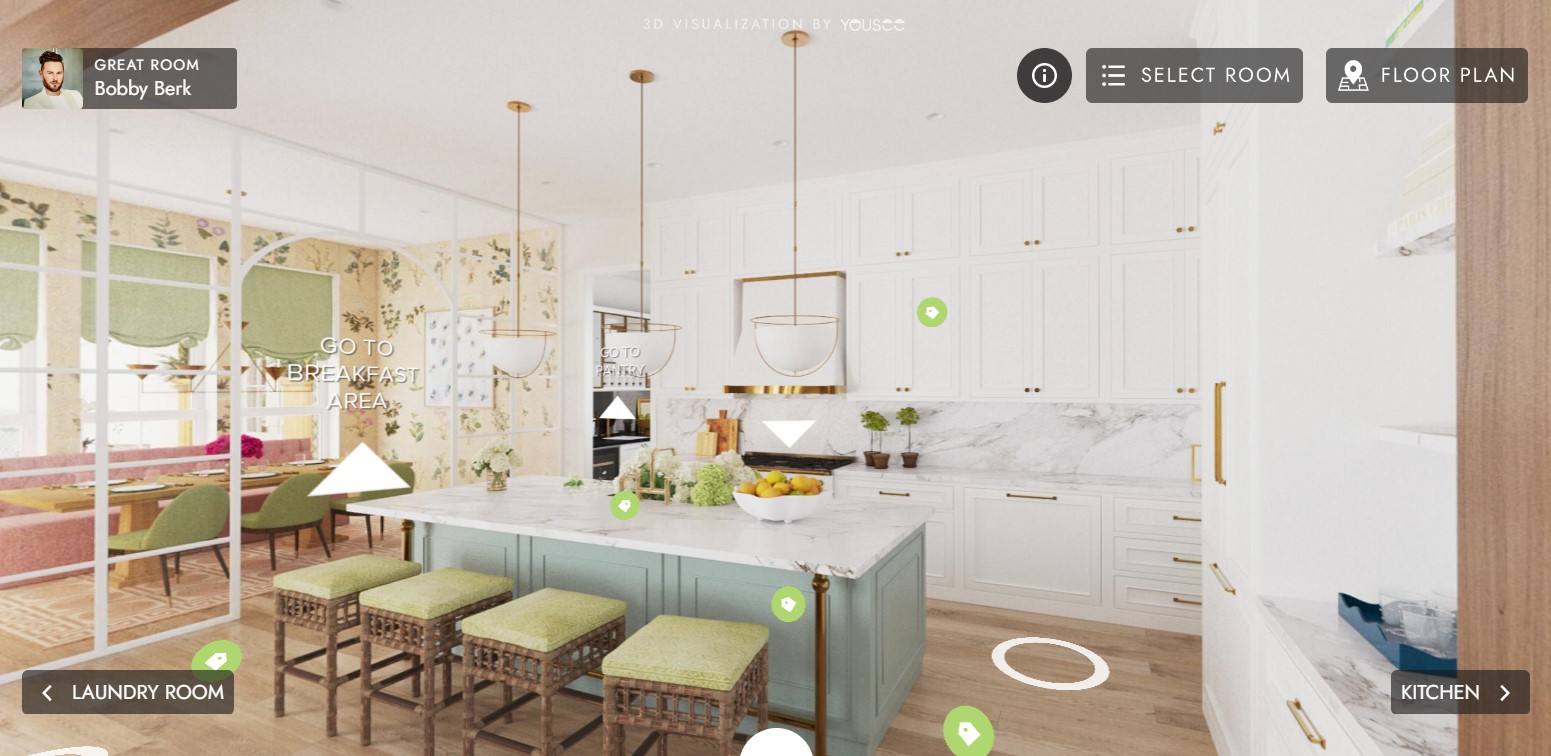Next-generation CGI marketing tools for eCommerce
In the ever-evolving landscape of eCommerce, businesses are constantly seeking innovative ways to stand out from the competition and drive sales. Enter the realm of next-generation CGI (Computer-Generated Imagery) marketing tools – a game-changing arsenal revolutionizing how online retailers showcase their products and engage with customers. From stunning 3D product visualizations to immersive virtual showrooms, these cutting-edge technologies are not just enhancing the online shopping experience; they're redefining it entirely.
The CGI Revolution in eCommerce
Integrating CGI marketing tools in eCommerce is not just a fleeting trend; it's a paradigm shift reshaping the industry. According to a recent Virtual Reality Marketing Institute study, eCommerce businesses that have implemented advanced CGI solutions have seen an average increase in conversion rates of 35% within the first six months of adoption. This staggering statistic alone underscores the transformative power of these technologies.

Image from Yousee Studio
But what exactly are these next-generation CGI marketing tools, and how are they making such a significant impact? Let's dive into the digital depths and explore the innovations setting new standards in online retail.
3D Product Visualization: Bringing Products to Life
Gone are the days when customers had to rely solely on static 2D images to make purchasing decisions. 3D product visualization has emerged as a cornerstone of modern eCommerce marketing, allowing customers to examine products from every angle, zoom in on intricate details, and even visualize customizations in real time.
One of the pioneers in this field, TechViz Solutions, reported that their clients experienced a 27% reduction in product returns after implementing 3D visualization tools. This decrease in returns improves customer satisfaction and significantly reduces operational costs for eCommerce businesses.
The power of 3D visualization lies in its ability to bridge the gap between the digital and physical worlds. Customers can now interact with virtual products in ways that closely mimic in-store experiences. For example, a furniture retailer using 3D visualization allows customers to see how a sofa would look in different fabrics or how a dining table would fit in various room layouts. This level of interaction builds confidence in purchasing decisions, leading to higher conversion rates and customer satisfaction.
Moreover, the versatility of 3D visualization extends beyond just product displays. Innovative e-commerce platforms are now using this technology to create interactive buying guides where customers can explore the features of complex products like electronics or machinery in an engaging, three-dimensional space. This educates the customer and creates a memorable brand experience that sets retailers apart from their competitors.
Virtual Showrooms: The New Frontier of Online Shopping
While 3D product visualization focuses on individual items, virtual showrooms take the concept further by creating digital environments where customers can explore and interact with a brand's offerings. These virtual spaces are not mere replicas of physical stores; they are imaginative, boundless realms that can showcase products in contexts impossible to achieve in the real world.
A groundbreaking study by the Digital Retail Consortium found that eCommerce businesses implementing virtual showrooms saw an average 150% increase in time spent on their websites. This extended engagement translates directly into higher sales, with the same study reporting a 40% increase in average order value for businesses utilizing this technology.

Virtual showrooms offer brands a unique opportunity to tell their story and create immersive experiences that resonate with customers. For instance, a sports equipment retailer might create a virtual alpine environment where customers can explore skiing gear in a realistic mountain setting. This showcases the products and taps into the customer's aspirations and lifestyle, creating an emotional connection beyond mere transactions.
The flexibility of virtual showrooms also allows for personalized experiences tailored to individual customer preferences. Advanced AI algorithms can analyze browsing history and purchase patterns to curate personalized virtual showrooms for each visitor. This level of customization has been shown to increase customer loyalty, with businesses reporting a 30% increase in repeat purchases after implementing AI-driven virtual showrooms.
Augmented Reality: Blending the Digital and Physical Worlds
While 3D visualization and virtual showrooms excel in creating digital experiences, Augmented Reality (AR) brings these elements into the customer's physical space. AR technology allows customers to visualize products in their environments using their smartphones or tablets, creating a powerful tool for decision-making.
The impact of AR on eCommerce is profound. A survey conducted by AugmentedRetail found that 71% of consumers would shop more frequently if they could use AR, and 61% prefer retailers with AR experiences. These preferences translate into tangible results, with businesses reporting conversion rate increases of up to 90% for products that can be previewed in AR.
The applications of AR in eCommerce are diverse and continually expanding. Cosmetics brands are using AR to allow customers to try on makeup virtually, while eyewear retailers are enabling virtual try-ons of glass frames. Large items like furniture and appliances can be visualized in a customer's home through AR, eliminating uncertainty and boosting purchase confidence.
One particularly innovative use of AR comes from the automotive industry. Digital Motor Trends reported that a luxury car manufacturer saw a 52% increase in online vehicle customization completions after introducing an AR app that allowed customers to visualize different car models and configurations in their driveways. This increased engagement and led to a 28% boost in high-end model sales.
AI-Powered Personalization: The Next Level of Customer Engagement
The true power of next-generation CGI marketing tools lies in their visual capabilities and their integration with artificial intelligence to deliver hyper-personalized experiences. AI algorithms can analyze vast amounts of customer data to create tailored product recommendations, customize virtual showrooms, and even generate personalized CGI content on the fly.
A landmark study by the AI in Retail Consortium revealed that eCommerce businesses utilizing AI-powered personalization in conjunction with CGI marketing tools saw an astounding 420% increase in customer engagement rates. This synergy between AI and CGI creates a new frontier in e-commerce marketing, where every aspect of the customer journey can be optimized and personalized in real-time.

Image from Yousee Studio
For example, an AI system might detect a customer frequently browsing outdoor gear. It could generate a personalized virtual showroom featuring 3D visualizations of tents, backpacks, and other relevant products in a photorealistic CGI wilderness environment. As the customer interacts with the virtual space, the AI continuously refines the experience, adjusting product placements and recommendations based on the customer's behavior.
This level of personalization extends to product customization as well. Advanced CGI tools powered by AI can allow customers to visualize complex customizations in real-time. A custom jewelry retailer, for instance, might offer an AI-driven design tool that generates photorealistic 3D renders of custom pieces as customers adjust various parameters like metal type, gemstones, and engraving.
The Impact on Conversion Rates and Customer Satisfaction
Integrating these next-generation CGI marketing tools has a measurable impact on crucial eCommerce metrics. A comprehensive analysis by Digital Commerce Today found that businesses fully leveraging 3D visualization, virtual showrooms, AR, and AI-powered personalization experienced:
- A 35% increase in conversion rates
- A 25% reduction in return rates
- A 40% increase in average order value
- A 50% improvement in customer satisfaction scores
These impressive figures underscore the transformative potential of CGI marketing tools in eCommerce. By providing customers with immersive, interactive, and personalized experiences, businesses drive sales and build more robust, enduring relationships with their customer base.
Overcoming Implementation Challenges
While the benefits of next-generation CGI marketing tools are straightforward, implementing these technologies can present challenges for eCommerce businesses. The initial investment in hardware, software, and expertise can be substantial, and there's often a learning curve associated with integrating these tools into existing e-commerce platforms.
However, the rapid advancement of cloud-based solutions and Software-as-a-Service (SaaS) models makes these technologies more accessible to businesses of all sizes. Companies like RenderCloud and VizTech offer scalable CGI solutions that can be integrated into existing eCommerce platforms with minimal disruption.
Moreover, the return on investment for these technologies is often rapid and substantial. EcommerceInsights reported that businesses implementing comprehensive CGI marketing solutions saw an average ROI of 300% within the first year, with some high-performing companies achieving breakeven in as little as three months.
Conclusion: The Future is Now
As we stand on the cusp of a new era in eCommerce, it's clear that next-generation CGI marketing tools are enhancing the online shopping experience and fundamentally reimagining it. From photorealistic 3D product visualizations to AI-powered virtual showrooms and AR applications, these technologies are bridging the gap between the digital and physical worlds, creating immersive, personalized experiences that drive engagement, boost conversions, and foster customer loyalty.
For eCommerce businesses looking to stay ahead in an increasingly competitive landscape, embracing these CGI marketing tools is no longer a luxury—it's a necessity. As consumer expectations evolve, those who can offer rich, interactive, personalized shopping experiences will thrive in tomorrow's digital marketplace.
The future of eCommerce is here, rendered in stunning, interactive CGI. Are you ready to take your online retail experience to the next dimension?
Contact us at YouSee Studio for captivating 3D renderings and immersive virtual experiences.
Ray Lisbon is a content writer and the author of this article.












